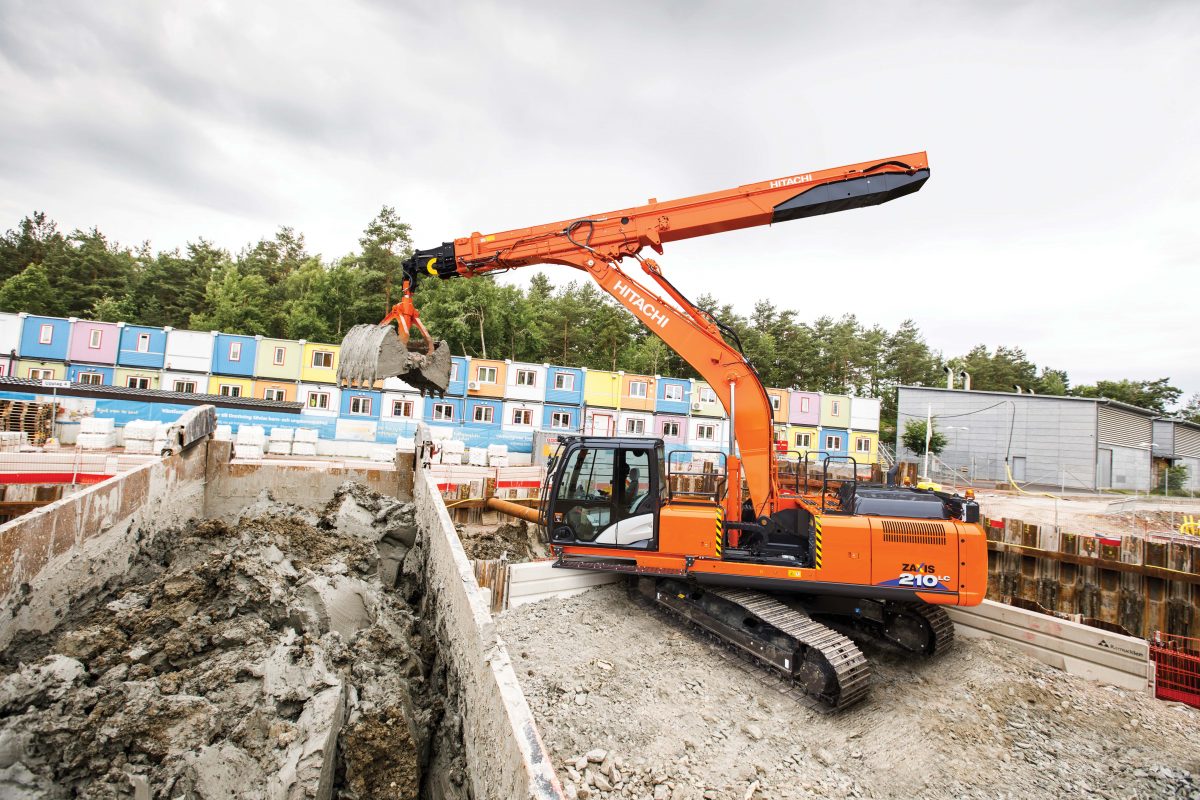Hitachi has unveiled a telescopic arm excavator for complex below-ground construction projects. The ZX210LC-6 can excavate to depths of 21 metres, and its telescopic arm extends and retracts using a combination of rope and hydraulic cylinders.
The sliding cab is positioned 960mm further forward than on a standard model and can move an additional 1,300mm forward to provide the operator with a better view of the ground below. Optional adjustable LED working lights can be positioned at the front of the cab to illuminate the area below ground.
In the unlikely event that the two ropes were to break suddenly or extend too far, an indication light would alert the operator immediately. Should too much pressure be applied once the clamshell bucket has reached the ground, a warning buzzer sounds to inform the operator. In addition, the telescopic arm is equipped with a hose rupture valve, which in the unlikely event of a damaged cylinder, would prevent any further impact on the machine or the environment. For enhanced versatility, the ZX210LC-6 telescopic arm excavator is also available with an optional standard arm and additional counterweight.
The machine has been developed by Hitachi to meet the challenging requirements of underground projects in Europe.
Toru Nabeshima, manager of the special application department at Hitachi Construction Machinery (Europe) NV, said: “The ZX210LC-6 telescopic arm excavator has been designed and built in-house, and incorporates the same technology as standard Hitachi excavators. Developed to meet the demands of a specific industry application, it is ideal for complex below-ground excavation tasks, such as the Grand Paris Project.”




